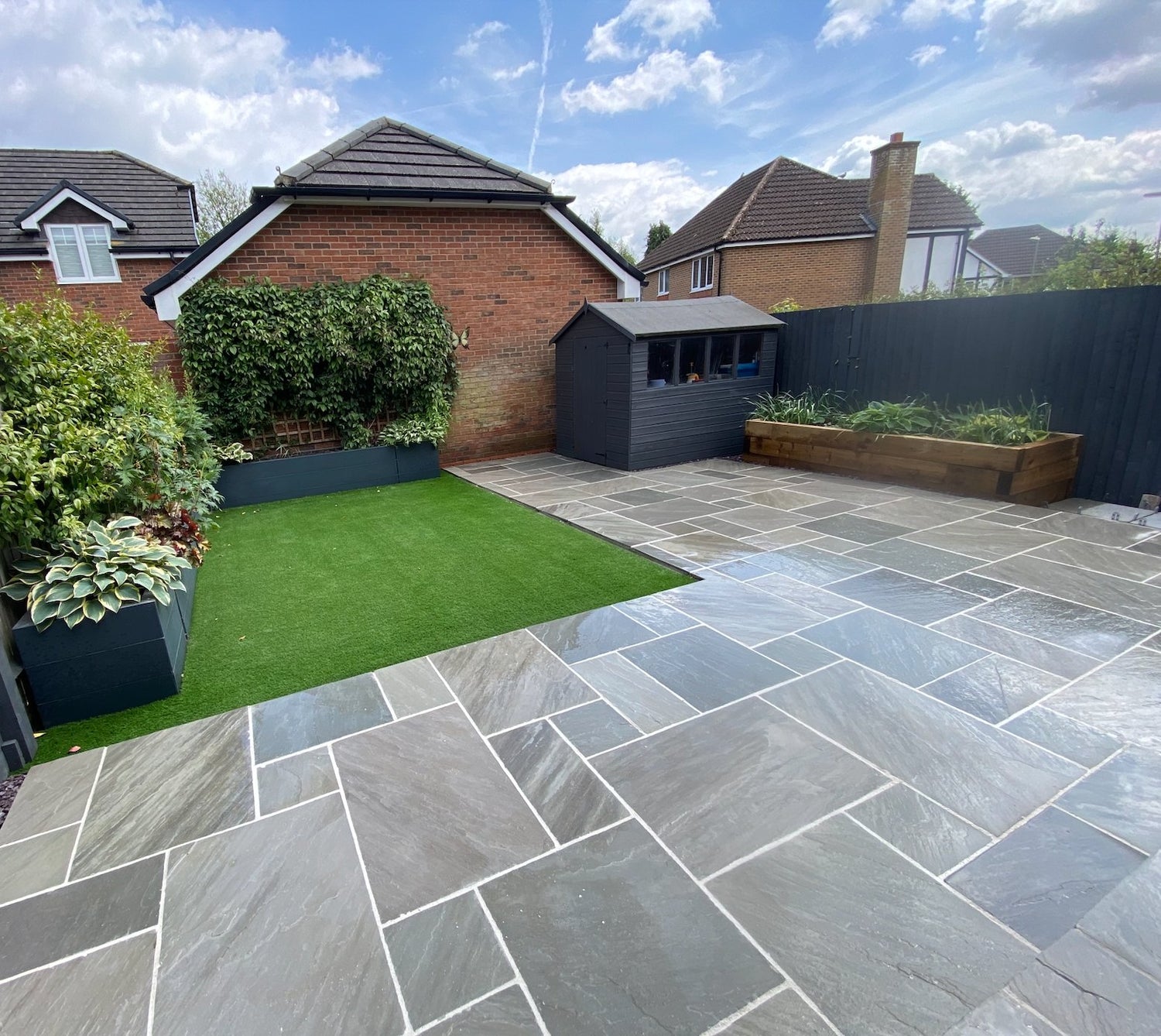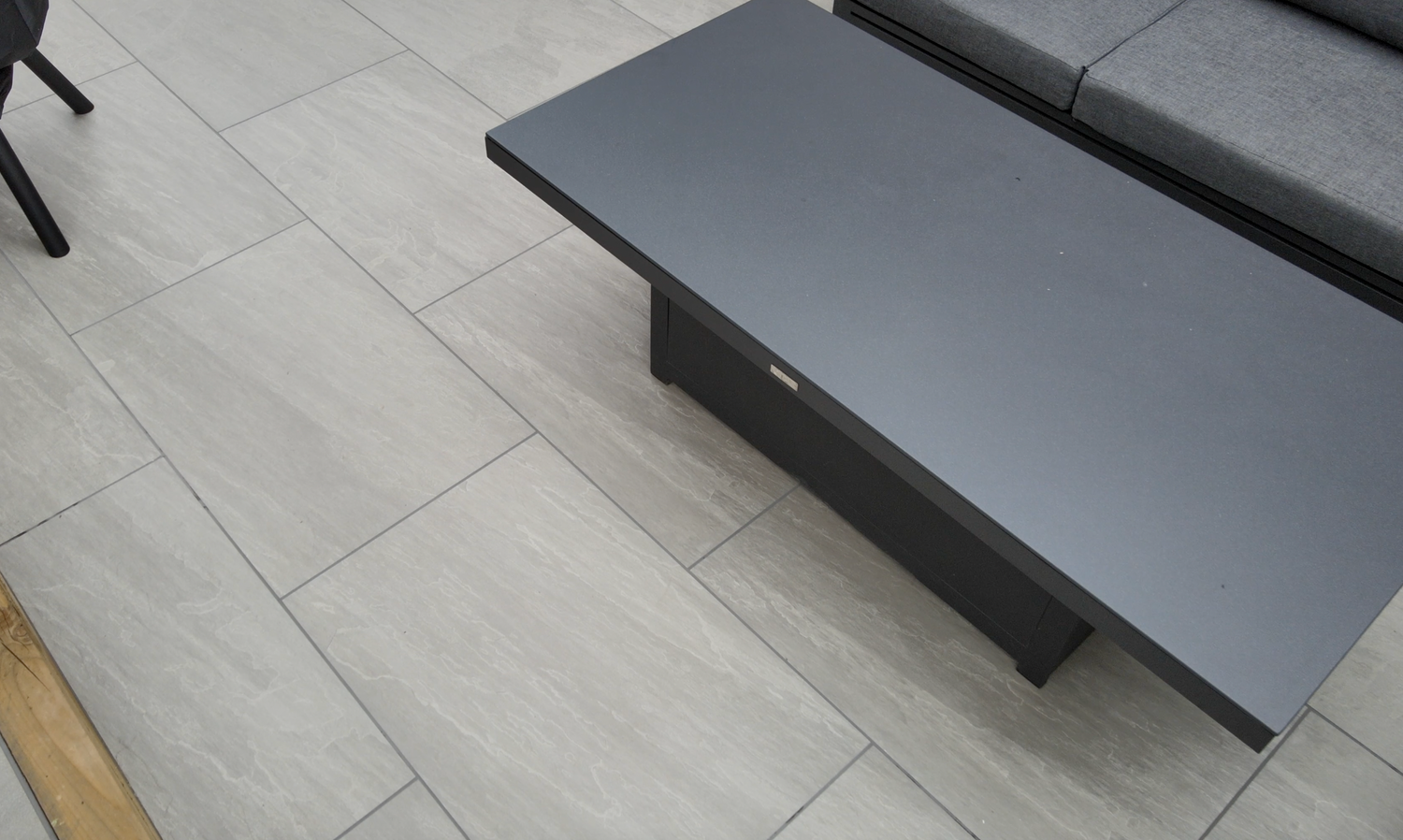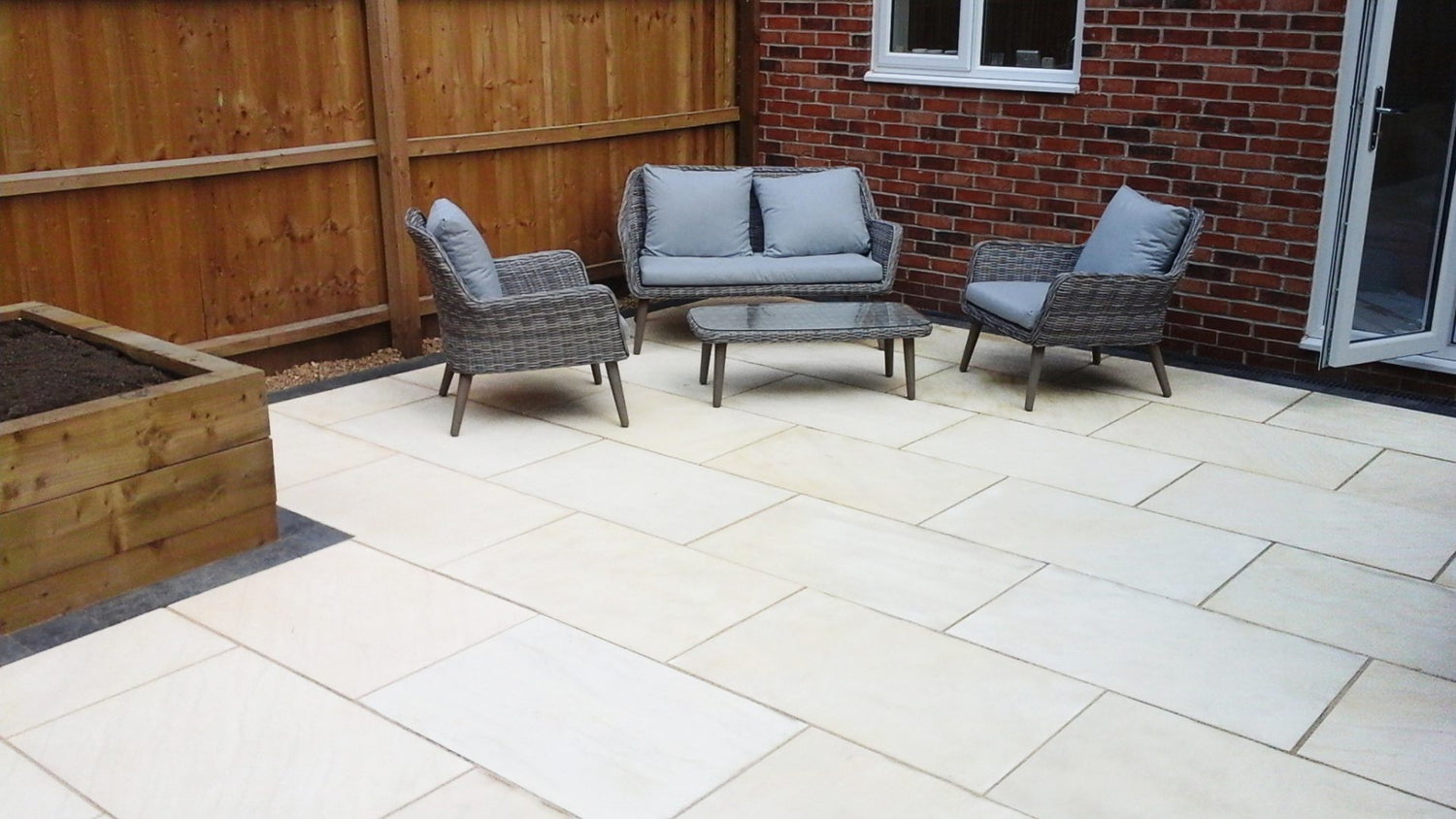
How to remove moss from patio paving
Share
What Causes Moss Growth on Patios?
Moss and weeds thrive in shady, damp areas with poor airflow. Patios surrounded by trees or structures that block sunlight and prevent water runoff create prime conditions. Cracks between patio pavers also invite moss. Dirt and debris collects in cracks, retaining moisture that moss needs to establish itself. Over time, neglecting basic patio maintenance allows moss colonies to expand across the entire surface. By understanding what enables moss, you can take preventative steps like sealing, improving drainage, and regular sweeping/power washing. But eliminating existing growth is the first priority.When is the Best Time to Remove Moss from a Patio?
Don't allow moss growth to continue uncontrolled. The sooner you remove moss, the easier it will be before roots establish themselves deep in patio cracks. Tackle small amounts of moss growth manually with a stiff broom and knife as it first appears. This prevents extensive chemical treatment later. For severe moss problems across large patio areas, the optimal time for chemical or power washing treatment is early spring. Colder months aren't ideal for patio maintenance.How to Use Chemical Moss Removers on Patios
Chemical moss cleaners offer the most thorough removal results. Look for patio-safe formulas that won't damage underlying pavers. Common active ingredients like iron sulfate or quaternary ammonium solve moss problems quickly.Follow these steps when using chemical removers:
1. Sweep patio to remove loose debris 2. Apply moss cleaner according to product instructions 3. Let sit for indicated duration 4. Use stiff bristle brush to agitate dead moss 5. Rinse thoroughly with garden hose 6. Allow patio to fully dry Repeat applications may be necessary for severe moss growth. Always exercise caution when handling chemical products.Natural Moss Removal Solutions for Patios
For those wanting to avoid chemicals around their patio, natural moss treatment options work too. They just require more scrubbing effort to pry up root systems lodged in cracks. Give these homemade recipes a try:Vinegar Moss Remover
- 1 part white vinegar - 1 part water - Spray mixture directly on moss growth - Allow to sit for 1-2 hours - Scrub with a stiff deck brush - Rinse cleaned area thoroughlyBaking Soda Moss Treatment
- Sprinkler baking soda liberally on moss - Allow to sit for 24 hours - Use broom to sweep away dead moss - Scrub with brush if roots persist - Rinse area clean after treatment The acetic acid in vinegar and alkaline profile of baking soda both create inhospitable conditions for moss to thrive.Power Washing for Moss Removal
Power washing combines chemical and manual scrubbing efforts for unbeatable moss removal results. The intense water pressure thoroughly blasts away moss and debris while sanitizing the underlying patio. Take caution not to hold the nozzle too close or directly aim at patio joints. This can erode mortar over time. Work systematically across the area, applying even pressure while slightly varying the washing path. Be sure to refill any missing joint sand once the patio fully dries so weeds and moss won't re-emerge from gaps between pavers.Preventing Future Moss Growth on Patios
Stop moss before it even starts by: - Sealing patio pavers annually - Improving drainage and runoff - Regular sweeping & hose washing - Pruning surrounding trees Sealing formulations create a protective barrier making it harder for spores and debris to penetrate cracks. Ensure patio materials are compatible before applying. Fix drainage problems causing standing water. Fill gaps between pavers promoting drainage. Maintain cleanliness through quick hose spray downs. Following these patio care tips minimizes the need for intensive moss removal in the future.FAQs about Removing Moss from Patios
Can you use bleach to remove patio moss?
While effective, bleach risks damaging surrounding plants and patio materials over time. Seek patio-safe alternatives like quaternary ammonium cleaners.Does vinegar permanently kill patio moss?
Vinegar kills active moss but doesn't prevent future growth. Combine with sealing and improved maintenance to keep moss at bay.What's an eco-friendly way to remove patio moss?
For chemical-free removal, boiling water kills moss on contact. Scrub dead moss away with a brush afterwards. Just take care to avoid scalds. With the right moss removal solutions and preventative care, your expensive patio pavers can remain beautiful for decades to come. No more slippery green invasion or unsightly stained surfaces. Restore your patio's glory this season using the effective treatment methods outlined above. It just takes vigilant maintenance moving forward to avoid extensive chemical intervention in the future.Related Posts
-

UK Garden Statistics and Trends 2024
UK Garden Statistics and Trends 2024 General UK Garden Statistics The vast majority of UK households have access to ...
-

Can I lay Paving on Soil or Mud?
Technically, yes – you can lay paving stones or slabs directly onto exposed topsoil however, laying a sub-base will e...
-

How Much Does a New Patio Cost?
A new patio in the UK typically costs between £80-£150 per square meter. For a 40-50 sqm patio, expect to pay £2,000-...
-

What Different Sizes Do Paving Slabs Come In?
When planning a patio or outdoor paving project, one of the key decisions is choosing the right size paving slabs. ...
-

Can You Pressure Wash Indian Sandstone?
Indian sandstone is a popular choice for outdoor paving due to its durability and attractive appearance. However, li...
-

Is Sandstone Paving Permeable? Is it porous?
Sandstone's porous nature enables it to absorb rainfall, qualifying it as a permeable paving variety. However, seali...
-

Where Does Natural Sandstone Paving Come From?
Sandstone begins deep underground, formed over eras as minerals and sediments fused under pressure. Powerful forces ...
-

5 Paving Ideas for Small Gardens: Maximise Your Outdoor Space
Front of House When considering paving ideas for the front of your house, it's crucial to select ones that complem...
-

9 Paving Ideas for Front of House: Enhancing Curb Appeal with Style
The facade of a house plays a pivotal role in defining its character and curb appeal, and the choice of paving can s...
-

9 Summer Garden Paving Ideas UK
Summer gardens offer a vibrant canvas for homeowners to express their style while enhancing outdoor living spaces. G...
-

8 Garden Paving Ideas for 2024
It's time to refresh your garden's look for 2024 and an easy way to do that is with some new paving. With so many opt...
-

How much does sandstone paving cost?
When choosing new garden pavers, sandstone offers homeowners an enticing middle-ground - more durable than basic conc...
-

Why Do Paving Slabs Crack And How To Repair Them
Seeing cracks appear on your patio or driveway can be disheartening after investing time and money into installing be...
-

How to lay paving in winter (Tips & Tricks)
How Cold Temperatures Impact Paving Projects The primary concern when working in cold weather is ensuring proper curi...
-

Sub Bases For Patios
Building the Perfect Patio Base: A Comprehensive Guide When planning an outdoor living space, understanding proper ba...
-

Pros and Cons of Porcelain Paving
Are you considering adding porcelain paving to your outdoor space? It's important to weigh the pros and cons before ...
-

Understanding Paving Slip Ratings: A Comprehensive Guide
A paving slip rating, also known as a slip resistance or anti-slip rating, is a measure of how slippery a surface...
-

Stunning Garden Water Feature Ideas - Enhance Your Outdoor Space
Garden water features are decorative elements that incorporate water into a garden, adding beauty and a sense of ...
-

How to Stop Weeds in Block Paving: Expert Tips andTricks
Weeds growing between the blocks of your paving can be an unsightly and frustrating problem. Not only do they make y...
-

How to clean paving without a pressure washer
A patio cleaner is a cleaning solution designed specifically for removing dirt, grime, and stains from outdoor patio...
-

How to Grout Paving Slabs – Expert Tips and Techniques
Pointing paving slabs is an important step in the process of installing them. Grout is a mixture of cement, water...
-

Block Paving Guide | What Does it Cost? | How Much Per m2?
Block paving is a versatile and durable option for creating driveways, patios, and paths. This method involves using...
-

Porcelain VS Ceramic Paving
Porcelain paving is non-porous and more durable than ceramic paving, which is more porous and prone to stains and wea...
-

Sandstone V Porcelain Paving - (Style Comparison and Distinctions)
When choosing materials for your patio or driveway, two of the most popular options are sandstone paving slabs and p...
-

Understanding Gradients and Falls for Paving and Drainage (2024)
When it comes to paving and drainage projects, understanding the correct gradients and falls is essential for ensuri...
-
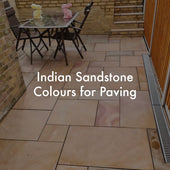
Indian Sandstone Paving Colours for A Patio - A Comprehensive Guide
Indian sandstone is one of the most popular paving materials, celebrated for its natural beauty and the variety of co...
-

Jointing and Pointing For Paving (Sand & Cement Mix)
Patio pointing is important for both looks and durability. It protects the layers under your paving, stops weeds, and...
-

How to Lay Paving on Sand and Cement: Expert Advice and Tips
Paving on Sand and Cement: A Comprehensive Guide When it comes to enhancing your outdoor space, paving is a popular ...
-

Pros and Cons of Sandstone Paving
Pros & Cons of Indian Sandstone Paving Indian sandstone paving is a natural and durable option that adds both bea...
-
Does Patio Paving Need Edging? A Comprehensive Guide
In this article, we'll explore the importance of patio edging, the different types of edging materials available, and...
-

Pet Friendly Paving - What is the best paving for a dog-friendly garden?
Creating a dog-friendly garden requires choosing the right paving materials to ensure your furry friends can enjoy t...
-

Patio Paving Laying Patterns Guide
Paving patterns can transform an ordinary outdoor space into a stunning and eye-catching area that complements your ...
-

Patio Kits vs Single Size Paving Slabs: Which To Choose?
When designing a patio or outdoor space, one crucial decision is whether to use a patio kit (also known as patio pack...
-

Are paving slabs suitable for driveways?
This is a question many homeowners ask when it comes to choosing the right type of driveway surface for their home. T...
-

How much paving do you need to cover your outdoor space?
Planning an outdoor paving project is exciting, but it’s crucial to accurately estimate the amount of paving needed b...
-

What is the Best Paving for Patios?
When it comes to choosing the best paving for patios, there are a variety of factors to consider, such as durability,...
-

Sandstone v Limestone v Porcelain: The Pros and Cons of Different Garden Paving Materials
Transforming your outdoor space involves choosing the right paving material, and porcelain and sandstone are two of t...
-

Are Paving Slabs Cheaper Than Decking?
Transforming your backyard into the ultimate outdoor oasis can be challenging when choosing between paving slabs or d...
-

How to lay a patio - An expert guide to laying paving slabs and patterns
There are a few things to consider before laying a patio, such as the type of paving stones and the laying pattern. Y...
-
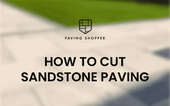
How to cut Sandstone Paving?
When it comes to prepping your garden for a new patio, you may consider different designs that require your paving to...









































